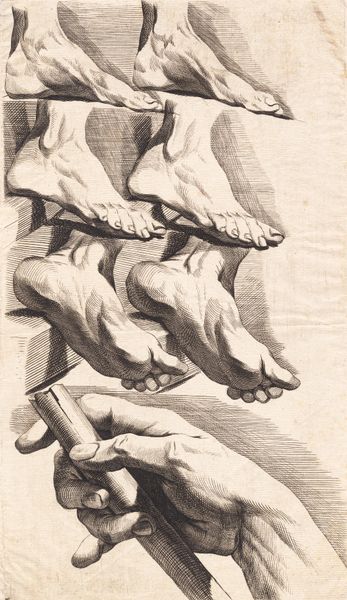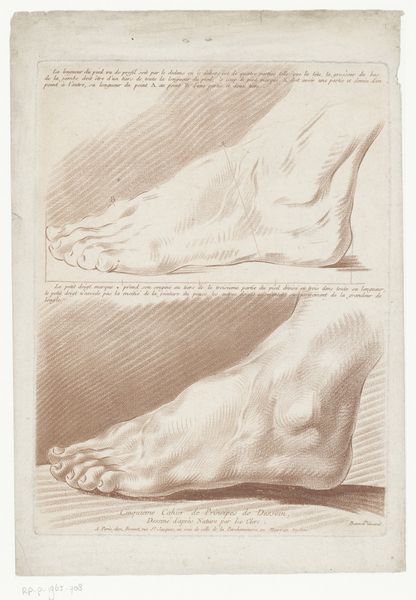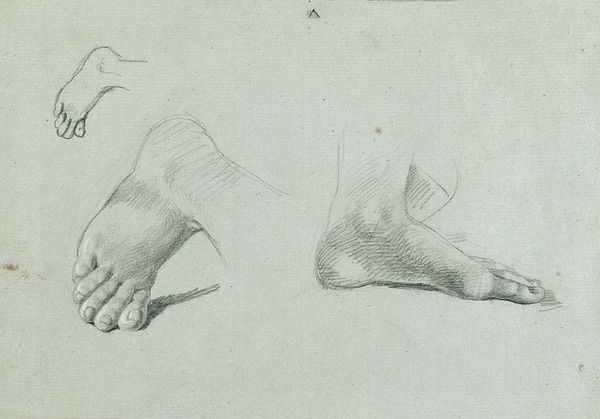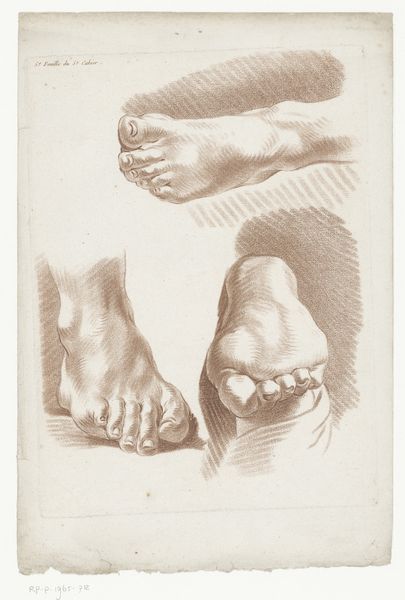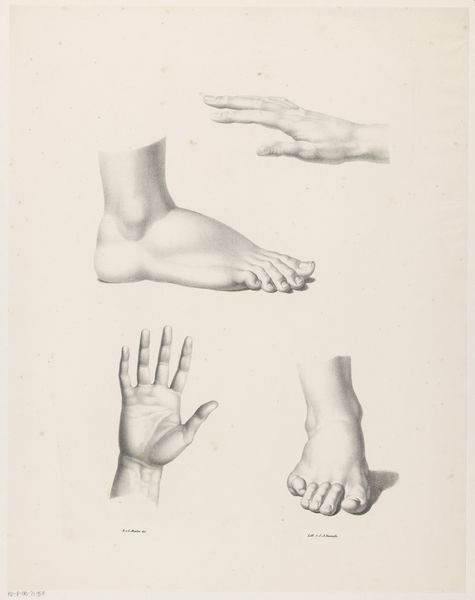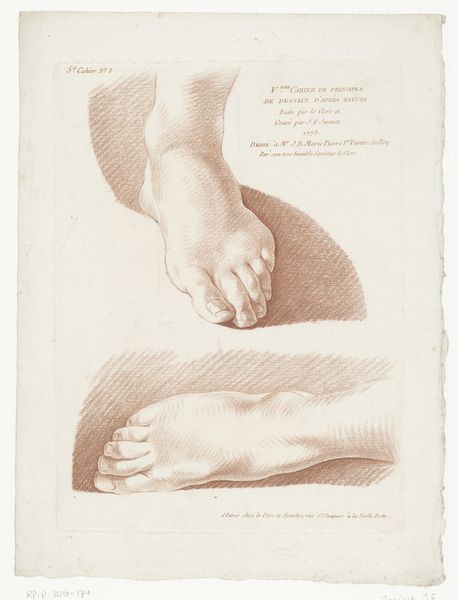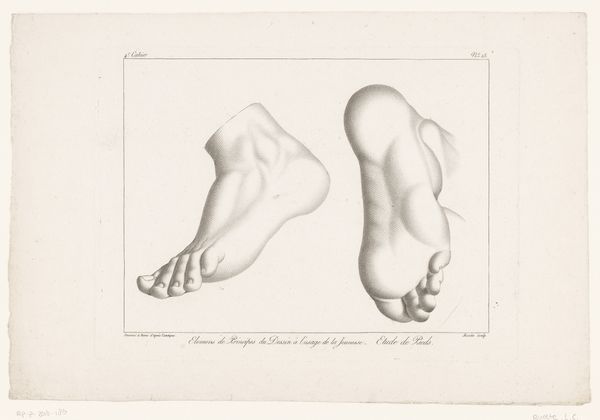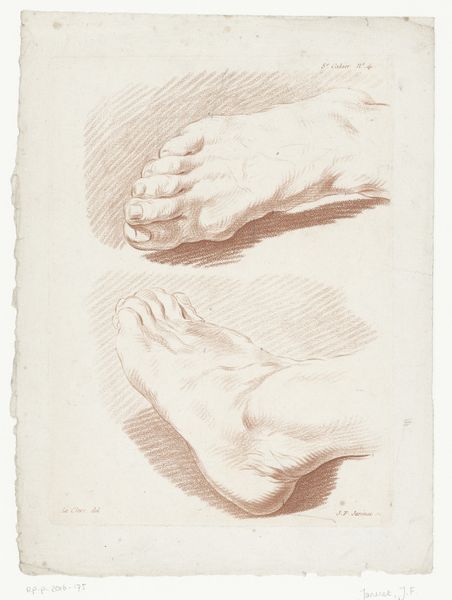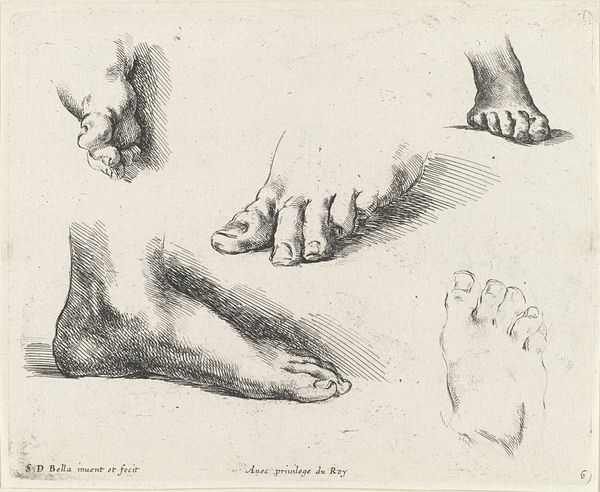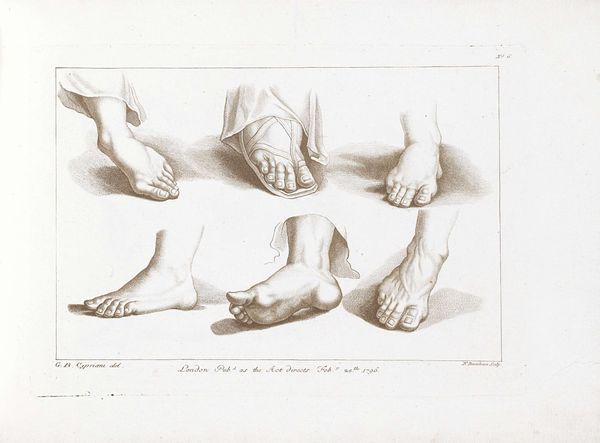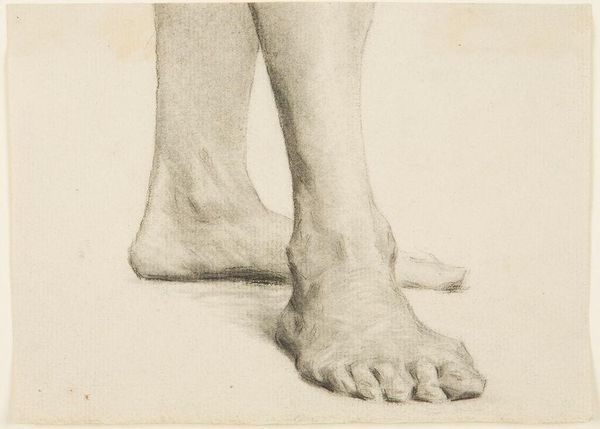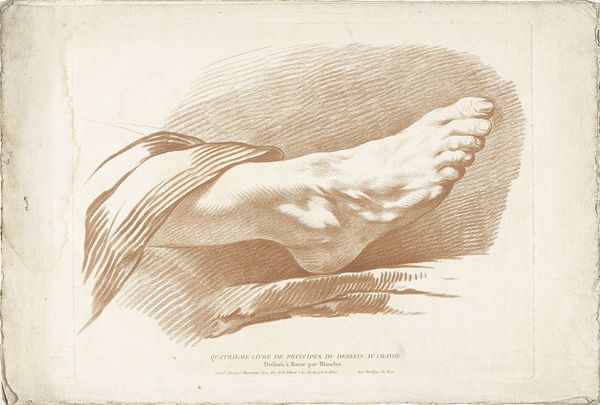
print, engraving
#
baroque
# print
#
form
#
pencil drawing
#
line
#
academic-art
#
engraving
#
realism
Dimensions: height 318 mm, width 220 mm
Copyright: Rijks Museum: Open Domain
Paulus Pontius made this print, "Studies van voeten", sometime before his death in 1658. It's made using engraving, a printmaking technique where the artist cuts lines into a metal plate, which are then filled with ink and transferred to paper. The precision of the engraving process allowed Pontius to capture the intricacies of human anatomy. Look closely, and you'll see the subtle textures and contours of the skin, the delicate bones and tendons beneath. The artist has also paid attention to the effects of light and shadow, creating a sense of depth and volume that brings the feet to life. Prints like these were often made for educational purposes, offering artists and students a way to study the human form in detail. But they also speak to the growing importance of scientific observation and empirical knowledge during the 17th century, a time when artists began to look more closely at the world around them, and to represent it with ever-increasing accuracy. This piece blurs the line between art and science, a testament to the power of making to reveal the beauty and complexity of the human body.
Comments
No comments
Be the first to comment and join the conversation on the ultimate creative platform.
